I guess you could say the upper North Platte River in southern Wyoming is my home stream. It’s an easy couple of hours from the house, a river my family has long embraced as a refuge from the heat of the high plains in July and August, a place we fish in the summer and I hunt in the fall, a thread of emerald and sapphire in a landscape of gray and tan.
We’ve canoed all but the most technical reach between Colorado and Interstate 80, the trips embroidered with eagles and ospreys, mule deer and bighorn sheep, scuttling broods of mergansers, dippers, and the repeated anthem of yellow warblers in the willows and alders along the way. We’ve waded and swum, picnicked under the bluffs where the swallows nest or in the shade of an ancient cottonwood, drifted with the current in the long, lazy pools, rushed over the brown cobble bars on a transparent carpet of water, down the hurrying runs, over the blue-green holes where the big browns and rainbows cruise.
It begins in the snowfields of Colorado’s Never Summer Range, the Park Range, the Rabbit Ears Range, Wyoming’s Medicine Bows, and Sierra Madres, gathering its water from the high country snow as it makes its way through North Park and eventually into the broad sagebrush valley in southern Wyoming before encountering its first dam north of Interstate 80.
The U.S. Geological Survey keeps a meter at the border between the two states, in recognition of the old maxim that, in the West, whiskey is for drinking and water is for fighting. Jealous irrigators in three states take a venal interest in every rise and fall in the river.
The other morning, I took it into my head that we should get out of town, so I accessed the online reports from the gauge, just to be sure there was enough river to float. Good thing I checked.
The gauge was running at 221 cubic feet per second, less than the 25th percentile of water for the date, less than a quarter of typical flow for this day in late July. Not even enough to get two lightly loaded canoes over the shallowest gravel bars. We’d missed our chance for floating this year— the river ran near flood stage through the month of May, then dropped precipitously through June and early July. If we’d been serious about canoeing, we should have done it sometime in those five weeks.
It’s easy to dismiss this as just another dry summer. The vagaries of weather and snowpack in the West are well known. But it seems to me that the window for enjoying the river has been steadily shrinking over the last thirty years, and that impression is bolstered by an increasing body of hard data.
Last winter, precipitation in the upper North Platte River basin was eighty-three percent of average, and, according to the U.S. Geological Survey, that’s the new normal— over the last twenty years, there have been only three with water content in the snowpack that edged over the long-term average. The reduced amount of water, combined with steadily increasing temperature, has brought an earlier, quicker melt and thirstier summers.
Which means no canoeing in July, August, or September, unless we want to get out and drag the boats. No fishing, unless we want to add to the stress the fish are already feeling because of high water temperature. It means a strong likelihood of wildfires up in the timber where the pine bark beetles have been enjoying the mild winters and devastating the forest. It means less forage for antelope and mule deer this fall and winter, which could easily affect the number of fawns born next spring.
These are some of the ways climate change touches me.
Of course, there are other consequences right here in the North Platte drainage— I don’t care much about them, but they’re matters of desperate concern for other people. Less runoff, combined with less summer rain, will put a strain on ranchers in the valley, whose livelihood depends, in large measure, on the amount of hay they can raise in a growing season that barely lasts four months. As they struggle to get a second cut off their hayfields, they’ll inevitably take more water out of the river at a time when neither the river nor its denizens can afford the loss. There’s a legal limit to how much they can take, which is already more than the river can stand, but since there’s seldom anybody watching, they can and do take more.
In spite of what western stockmen say, the collapse of the western cattle industry would hardly be noticed, even in the economies of the states that pay them such obeisance, but high up on the peaks that feed the North Platte, a much more consequential business is watching the change in snowpack with alarm.
According to a 2015 analysis published by Colorado Ski Country USA and Vail resorts, the ski industry contributes nearly $5 billion to the Colorado economy, and leaders of that industry are faced with sobering estimates of snow loss in the next thirty years. According to one study, Steamboat Ski Resort, the area nearest the headwaters of the North Platte, could lose three-fourths of its days with natural snow by 2050. The effects of such a change in the Colorado high country would ripple through the tourism industry, travel, real estate, construction, and insurance with devastating effect.
So I guess a lot of people care about the North Platte, one way or another. When my canoe drags on a gravel bar at Bennett Peak in July, you’d think the sound would be heard all the way to Denver. Even to Washington, D.C. The Colorado ski industry has at least given the problem some lip service, committing to raising “awareness of what climate change could do to the skiing and snowboarding experience,” to reducing their greenhouse gas emissions, and encouraging "others to address climate change.” That’s something, I suppose.
Slowly, painfully, electrical utilities in the region are moving away from coal as a primary fuel and beginning to embrace non-carbon alternatives, although their enthusiastic support for industrial-scale wind energy projects in remote areas is causing significant environmental problems of its own. I see a few more solar panels on the roofs of homes, a few more electric and hybrid vehicles in driveways.
It’s not as if the specter of climate change is completely ignored. It’s something we talk about at parties, a subject that rates a page or two in the official platforms of the political parties. We’re giving it a little thought.
And the North Platte is dying. The flowing soul of the central Rockies, wasting away to nothing.
As I sat looking at the numbers from the river gauge, an unexpected whisper from a favorite story came to mind— the words of Ebeneezer Scrooge, Charles Dickens’ old sinner, the miser who put profit ahead of every other blessing of life, in that moment when he contemplated his own mortality and knelt before the silent spirit of the future:
“Are these the shadows of the things that Will be, or are they the shadows of things that May be, only? Men’s courses will foreshadow certain ends, to which, if persevered in, they must lead. But if the courses be departed from, the ends will change. Say it is thus with what you show me!’
The spirit did not answer. Was it because he was inclined to mercy? Or did he doubt the capacity of men to change?
I wonder ...











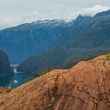
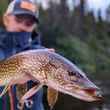



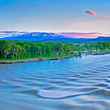
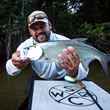








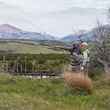


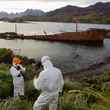

Comments
Rawhide replied on Permalink
All climate change is man made. The earth’s climate has never changed in all history! And all ranchers are water stealing thieves! What a bunch of whining trash
Alan Jackson replied on Permalink
What credentials have you to claim such a statement ?
John Egbert replied on Permalink
The earth's climate is always changing. Civilization as we know it developed in a warming period after the last ice age. We are still in the Holocene, but adding to temperature rise. To the author, the river is not going away. It's not what it used to be, but it's been butchered for years by water withdrawals and dams. I agree with your analysis , but Colorado and Wyoming have a chance with political will to regulate diversions. Seems the power in that remote area lies with local ranchers as it has for over a century. Tough deal. Obviously we fisherfolk can't have it as we once did. In time trout will truly be high altitude creatures. Of course political will could stabilize or even reverse the trend. Change needs to happen fast!
Joe replied on Permalink
Nice sobering piece on the future reality of our beloved rivers. I get out twice a week and worry about what Colorado will be like in 10-20-30 years. Though, you can take action today in helping climate change. I use https://www.arcadia.com/ which ensures I offset my electricity usage with wind energy. A simple and effective way to reduce my families carbon footprint.
Richard Fetterly replied on Permalink
In an amazing coincidence, I was just reading my new "Flyfishers guide to WY" cuz I was thinking abt fishing the N Platte in September. Then this article appeared on fb. Wonder if it will be fishable further down. Too bad we've lost at least 4 yrs of conservation with trump n maybe more with covid.
Jerry Kustich replied on Permalink
Good piece, but very sad. In my younger day I witnessed the dewatering of the Jefferson River where I lived in Montana. Though we were able to work out in-stream flow resolutions, it did seem just a matter of time that a warmer climate and increasing population would catch up with the West. Now that we have an administration that has no interest in environmental integrity, it does seem the deck is stacked. Ironically, the reasons why most people move out Wests are drying up.
Alan Jackson replied on Permalink
A respect for Water is imperative. Blaming the present Administration for the problem/ solution,.. really? We are dealing with restoring water flow to the Florida Everglades. Local State and Federal Gov. / politicians and specifically the Army Corp. have over 50 years meddling with THE natural flow of water thru Everglades to the Florida Bay. Locally we experience drought. Has nothing to do with the hypothesis of Global Warming in my opinion as a licensed Environmentalist.
Bob Miller replied on Permalink
Climate change happens when mother nature decides it will happen. Man may make a small contribution but that pales when compared to the real deal. How long ago was the U.S. under thousands of feet of ice? Remember the dinosaurs? Does anyone think that man could cover the U.S. with ice as mother nature has done and may well do again? Adapt we must but no amount of money and wishful thinking will be able to alter world weather.
matthew housel replied on Permalink
Went to see a friend in Encampment, Wy 2 years ago in September. The river was so low, we didn't even fish it. Ended up spending all our time fishing the private ponds in the area. The platte was in sorry shape to say the least.
Fred Reimherr replied on Permalink
Chris,
I have fished in this area several years ago in early October. The cottonwoods along the river were at peak fall colors. Is the low flow you reported a natural phenomena or a result of irrigation diversions?
Paul Dykstra replied on Permalink
As a rancher, fisherman and conservation minded citizen I read this with interest. I'm a native of western Colorado and now live in western Nebraska near the North Platte. While you admittedly don't care I would certainly disagree that " the collapse of the western cattle industry would hardly be noticed". While Wyoming's #1 industry is mining (which I doubt you support much either?) the majority of the state's citizens make their living in agriculture, with cattle far and away the largest Ag sector. The economies of many western states see large contributions from agriculture as well. Colorado is clearly more diverse in terms of industries, for sure. However, tourism, sir, is not going to feed the people of this nation. Why can't we consider cooperative solutions without demonizing an entire region's people, especially those that produce food? Is it possible to admit that systems could evolve or be amended rather than dissolved? The partisan tone of your piece diminishes its otherwise noble intent. Blaming climate change on ranchers is quite an uninformed position. We need to stop perpetuating half-truths and passing off opinion as facts. I admire your concern but disapprove of this condemnation.
Fred Reimherr replied on Permalink
Chris,
I was quite impressed with your article. Is the flow you reported in your article the natural flow of the North Platte in this area or are there irrigation diversions which are creating this low flow?
Thomas A McIntyre replied on Permalink
Chris: A friend sent me the piece. Good to hear your voice. Sad to hear your report. The spirit may not have answered because it was dying of thirst.
Joe Scott replied on Permalink
I think it is unfair to cherry pick a particularly low water year in 2020 and claim climate change is to blame. All you have to do is look one year back to 2019 a massive water year when the flow didn’t drop below 1000 cfs until late July. We need more data over the span of decades to determine the health of this river, not just one or two years.
Pages